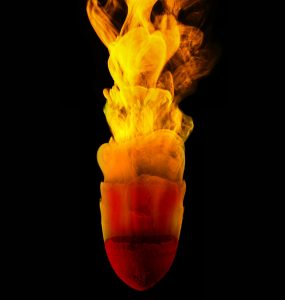It’s just the physics of flight, mathematicians suggest.
This short article discusses why a meteorite is often cone-shaped by looking at how the forces and energy they experience shape them. It is suitable for Year 7, 8 and 10 Physics students learning about unbalanced forces, heat energy, gravity and Newton’s Laws.
Word Count: 263

Why is it that meteoroids in outer space are randomly shaped, but a good proportion of those that reach the Earth as meteorites are found to be carved into cones?
It’s all due to the physics of flight in the atmosphere, suggest researchers from New York University’s Applied Mathematics Lab, who used clay models to replicate the process of melting and erosion during meteorite flight.

“Slender or narrow cones flip over and tumble, while broad cones flutter and rock back and forth, but we discovered between these are cones that fly perfectly straight with their point or apex leading,” says Leif Ristroph, lead author of a paper published in the journal PNAS.
He and colleagues attached their clay objects to rods then held them in a water current. Eventually, they say, these were carved into cones of the same angularity as conical meteorites.
Of course, real meteorites aren’t held in a fixed position; they can freely rotate and tumble. So, the researchers asked, what allows them to keep a fixed orientation and successfully reach Earth?
They conducted additional experiments in which they examined how different shaped cones fell through water. Here they discovered that narrow cones flip over while broad cones flutter. However, in between these two are “just right” cone shapes that fly straight.
“These experiments tell an origin story for oriented meteorites: the very aerodynamic forces that melt and reshape meteoroids in flight also stabilise its posture so that a cone shape can be carved and ultimately arrive on Earth,” says Ristroph.
Years: 7, 8, 10
Login or Sign up for FREE to download a copy of the full teacher resource





